#Johannes Itten
Text
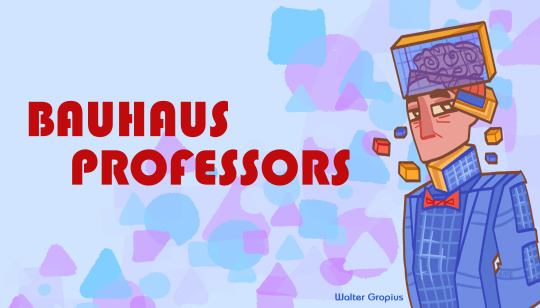


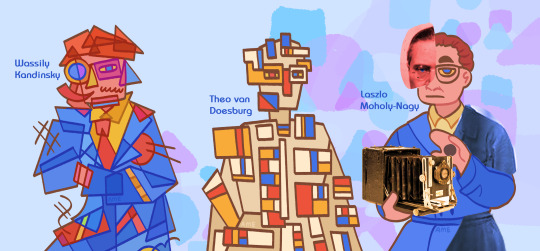
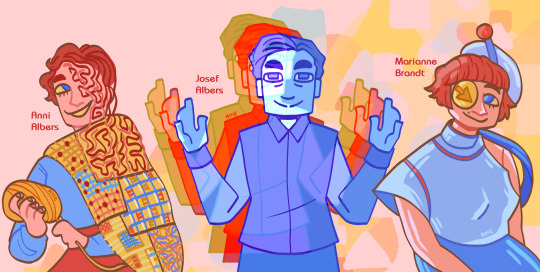

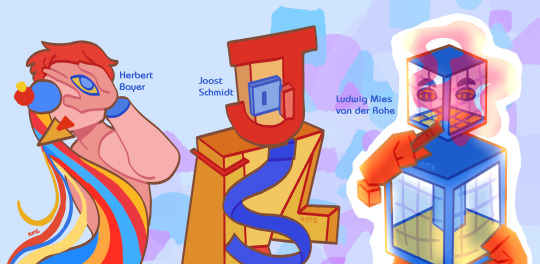
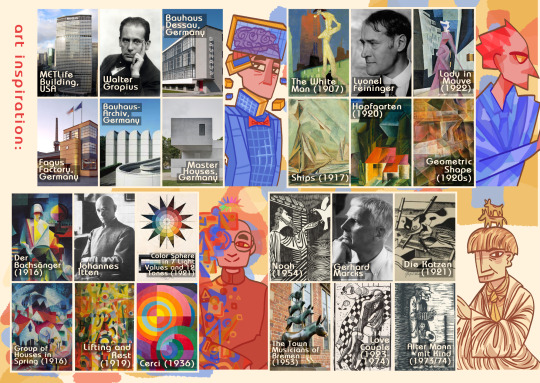

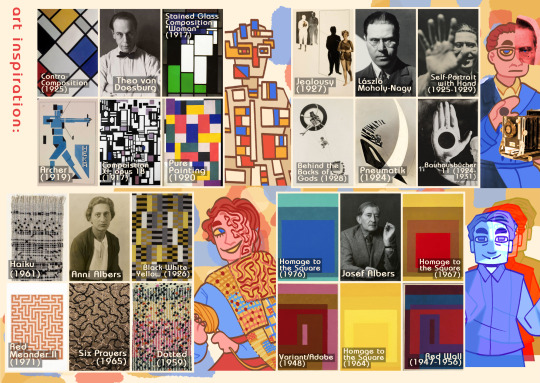


some art of professors (and just. artists) from the bauhaus inspired by their own works!!! i did this for a school project and am really proud of it <333
u can check the references on the bottom for their popular works!!
(rb's appreciated!!)
#bauhaus#walter gropius#lyonel feininger#johannes itten#gerhard marcks#gertrud grunaw#paul klee#oskar schlemmer#wassily kandinsky#theo van doesburg#laszlo moholy-nagy#anni albers#josef albers#marianne brandt#gunta stolzl#gertrud arndt#marcel breuer#herbert bayer#joost schmidt#ludwig mies van der rohe#art#ame art
302 notes
·
View notes
Text

Johannes Itten (1888-1967) — Circle of Light [oil on canvas, 1915]
80 notes
·
View notes
Text
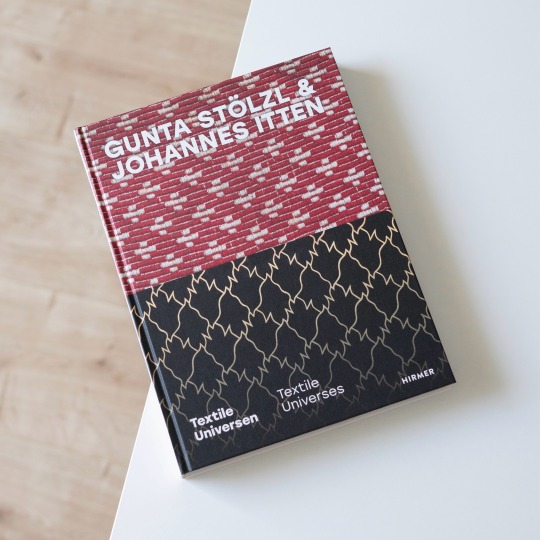
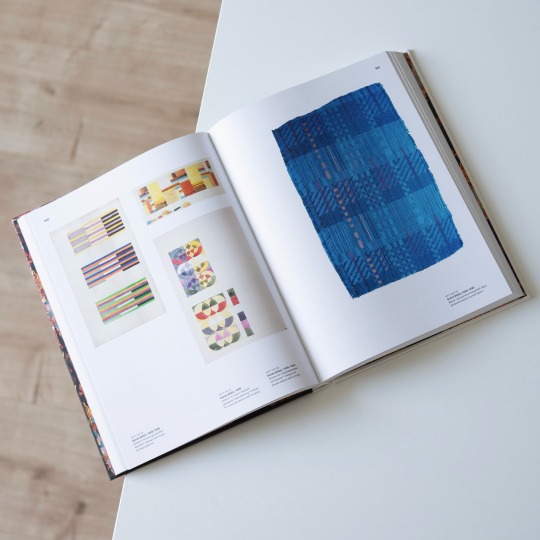
In contrast to his Bauhaus colleague Gunta Stölzl, Johannes Itten’s deep involvement with textile design is largely unknown. But in fact it was the book „Méthode de composition ornamentale“ by Eugène Grasset which explicitly dealt with weaving that had a profound influence on his engagement with abstraction. And later at the Bauhaus Itten, together with his fellow master Georg Muche, identified the potential latent in textile art and actively supported Gunta Stölzl in her effort to establish a textile workshop. Revealingly, the latter was the only commercially profitable Bauhaus department. In this context Itten also recognized the brilliance of Stölzl’s work that was regularly discarded as „women’s art“. Consequently, their relationship outlasted the Bauhaus and their professional paths crossed multiple times after Stözl's emigration to Switzerland.
Itten’s and Stölzl’s crossing paths, their Swiss networks as well as their textile works at long last are the subject of the Kunstmuseum Thun’s current exhibition „Gunta Stölzl & Johannes Itten: Textile Universes“ which runs through December 1 and is accompanied by the present catalogue published by Hirmer Verlag. The catalogue starts out with a Stölzl’s outline of the genesis of the Bauhaus’s textile workshop in which she played a pivotal role and which was characterized by a great deal of improvisation, self-initiative and experimentation. The expertise she gained in a just a brief period of time in turn led Itten to invite her have her organize the weaving at his newly founded Ontos workshops.
When Stölzl emigrated to Switzerland in 1931 she founded S-P-H Staff in Zurich together with fellow Bauhaus graduates Gertrud Preiswerk and Heinrich Otto Hürlimann. The company was rather short-lived and produced carpets and upholstering for the home. Much more successful but largely neglected is her long-term directorship of the Handweberei Flora workshop where she designed fabrics for fashion, furniture and curtains. After her retirement in 1967 she fully dedicated herself to her textile art.
After a brief interlude in Krefeld Itten in 1938 also returned to Switzerland and took over the helm of Kunstgewerbeschule Zurich, a position he held until 1953. In 1945 he also became head of the Textilfachschule in Zurich and on various occasions produced very interesting textile works that are presented in the catalogue alongside Stölzl’s.
The former not only by means of the excellent reproductions but also due to the highly informative essays shed light on the outstanding textile art of the two former Bauhäusler. A highly recommended read!
17 notes
·
View notes
Text

Johannes Itten (Swiss, 1888-1967) - Mountain and Lake (1939/1940)
153 notes
·
View notes
Photo

Johannes Itten (Swiss, 1888-1967), Plumen, 1957. Gouache, watercolor and brush and indian ink on paper, 34.8 x 38.8 cm
257 notes
·
View notes
Photo

Heinrich Kümpel / Emil Mehr, [24-teiliger Farbkreis, Farbtafel nach Johannes Itten], 1944 [Museum für Gestaltung Zürich]
#graphic design#art#art education#design education#colour theory#color theory#colour study#color study#geometry#pattern#johannes itten#heinrich kümpel#emil mehr#museum für gestaltung zürich#1940s
192 notes
·
View notes
Text

Johannes Itten - Sitzende mit Hut. 1914
5 notes
·
View notes
Text

I’m reading a book by Johannes Itten, a Bauhaus master who taught at the institution alongside the likes of Kandinsky and Klee, whose teachings propose that the effects of color upon human perception hold a universal truth that is witness-able & innate to us all. Yet, this essence remains ineffable without trained control. Itten states that control of these “color effects” can be achieved through contemplative proportionality and pairing of colors in a space. If color is the “vehicle of expression” in an artwork, the artist cannot let it be an afterthought. 🔳🔲 my ramblings on this subject follow…
Can you describe with words an emotion that is elusive & undefined to us by language alone..? How do you describe emotions and ideas through colors? Is it even possible to convey a personal emotion or feeling to another person without words? Will they ever be able to understand, in totality, what it was that you felt either way ..?
Platonic epistemology & Plato’s doctrine of recollection, are theories (or ideologies) where Plato asserts that all knowledge of the universe is innate to our being & soul, even such that it precedes birth. But, he states, these inherent truths will remain unrecognized, lost to our subconscious, if we don’t first seek its discovery.
Perhaps I just need to learn how to recall these inherent truths of our reality, told through color as it’s divine medium … maybe then I’ll be able to successfully evoke my own inexpressible emotions to another person through my art..?
I’ve always been fascinated by the ways that art can be used to enlighten the overall reality of an observer, unexpectedly creating a lasting impact at times. It is a great achievement to touch the mind and heart of another person through an original creation, especially when the artist’s intention is realized.
Personally, when someone goes out of their way to tell me my art made them feel a particular emotion or connect to an idea, it’s like being understood for the first time. But sometimes, I fail to reconcile with even my own expression through my art.
I’ve long felt frustrated by my inadequacy to truthfully express my thoughts creatively, both to others & to myself. & by chasing answers to my question for a lack of words—it’s led me to the work of others who’ve shared the same questions, once asked long ago..
The existence of an essence or dormant knowledge to our reality still remains an indefinite mystery, potentially impossible to answer. But I’m grateful to the Bauhaus masters like Itten, & pioneers like Goethe among others, who approached these metaphysical ideas & developed color science & theory as we know it today.
#post#ramblings#johannes itten#wassily kandinsky#bauhaus#color theory#goethe#hobonichi#jounaling#studyblr
7 notes
·
View notes
Text











Wat? Bauhaus-logo door Oskar Schlemmer, Bauhaus-tentoonstelling 1923, Ontwerptekening Das Haus am Horn, Maquette das Haus am Horn, bladen uit Neue Europäische Graphik. Erste Mappe: Meister des Staatlichen Bauhauses Weimar, Exemplar 26/110 en bladen uit Meistermappe des Staatlichen Bauhauses, Exemplar 29/100
Waar? Bauhaus Museum, Weimar
Wanneer? 29 juli 2024
Het Bauhaus werd in 1919 door Walter Gropius opgericht. Hij verenigde de in 1915 gesloten Kunstgewerbeschule van Henry van de Velde met de Grossherzoglich Sächsische Hochschule für bildende Künst tot één school: de Staatlichen Bauhaus in Weimar, meestal kortweg aangeduid als Das Bauhaus. Kunst is volgens het Bauhaus-programma niet leerbaar, maar kunst en kunstnijverheid hebben dezelfde grondbegrippen. De leerlingen leren in één van de tien werkplaatsen een ambacht.
Gropius schreef in 1919 in het Bauhaus-manifest: “Architecten, beeldhouwers en schilders, wij moeten allen terug naar het handwerk! Want er bestaat geen ‘beroepskunst’. Tussen de kunstenaar en de handwerksman bestaat geen wezenlijk verschil. De kunstenaar is een handwerksman die zichzelf overtreft. […] Geen enkele kunstenaar kan echter buiten de basis van het handwerk. Dat is de oorsprong van het artistieke proces.”
In 1923 presenteerde de school voor het eerst resultaten van het onderwijs. Het Haus am Horn, waar ik gisteren was, is een gezamenlijk product van alle werkplaatsen. Nadat rechtse krachten het voor het zeggen kregen, viel de financiering voor de school weg. Het instituut sloot de deuren en vertrok uit Weimar.
Er wordt in het Bauhaus Museum aandacht besteed aan de verschillende meesters die de school heeft gekend en hun specifieke inbreng. Ook is er een wand met grafisch werk van de meesters van het Bauhaus. Die zijn afkomstig uit twee mappen: Neue Europäische Graphik. Erste Mappe: Meister des Staatlichen Bauhauses Weimar, Exemplar 26/110 en Meistermappe des Staatlichen Bauhauses, Exemplar 29/100. Het zijn bekende namen, waaronder Oskar Schlemmer (die ook het Bauhaus-logo ontwierp), Lyonel Feiniger, Wassily Kandinsky, Gerhard Marcks, Johannes Itten en Paul Klee.
Ik kies uit beide mappen een paar voorbeelden.
Uit map I:
Titelblatt
Blatt 3: Spruch door Johannes Itten (1888-1967)
Blatt 5: Die Heilige von inneren Licht door Paul Klee (1879-1940)
Blatt 7: Die Katzen door Gerhard Marcks (1889-1981)
En uit de map II:
Titelblatt
Blatt 2: Fröhlicher Aufstieg door Wassily Kandinsky (1866-1944)
Blatt 3: Die Verliebte door Paul Klee (1979-1940)
Tijdens mijn verblijf in Weimar logeer ik in Hotel Kaiserin Augusta, recht tegenover het station. Elke etage is er gewijd aan één van de Bauhaus-meesters: Feininger, Kandinsky, Klee en Schlemmer. Ik verblijf op de derde etage, gewijd aan Klee. Vreemd genoeg bevinden afbeeldingen van de werken zich uitsluitend op de gang. Er is geen kunst (of zelfs maar kitsch) in de kamers; slechts witte wanden. Dat doet dan wel weer recht aan het Bauhaus-motto: ‘Less is more’!
4 notes
·
View notes
Text

Johannes Itten -
Color Sphere In 7 light values and 12 tones.
1921
Bauhaus Archive Berlin
25 notes
·
View notes
Text

Johannes Itten (1888-1967) — The Fire Tower [sculpture, 1920]
111 notes
·
View notes
Text

Postcard-size master copy of Johannes Itten’s 1944 “Space Composition, II” using colored pencils.
7 notes
·
View notes
Text

Johannes Itten - Glashaus (1954)
#arte#arts#art#painting#modern art#arte moderna#canvas#arte contemporanea#contemporary art#modern#johannes itten
24 notes
·
View notes
Text



Вот они мои любимые хроматические цвета первого порядка слева направо 🫡
Каждуб картинку по отдельности я уже выкладывала, так что время посмотреть на них вместе!!!!! Как же прикольна они смотрятся рядом друг с другом просто класс я гений 😋
2 notes
·
View notes

